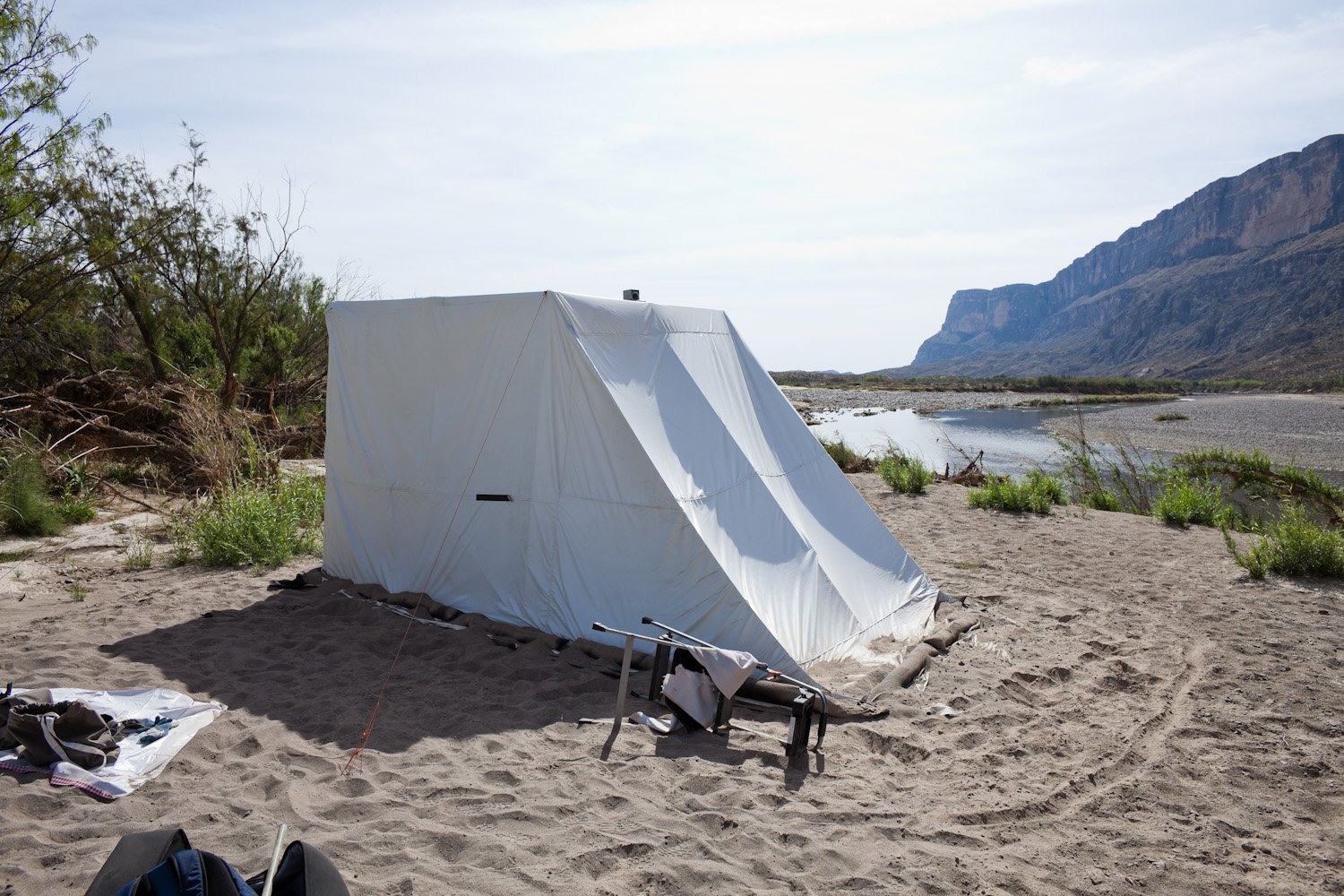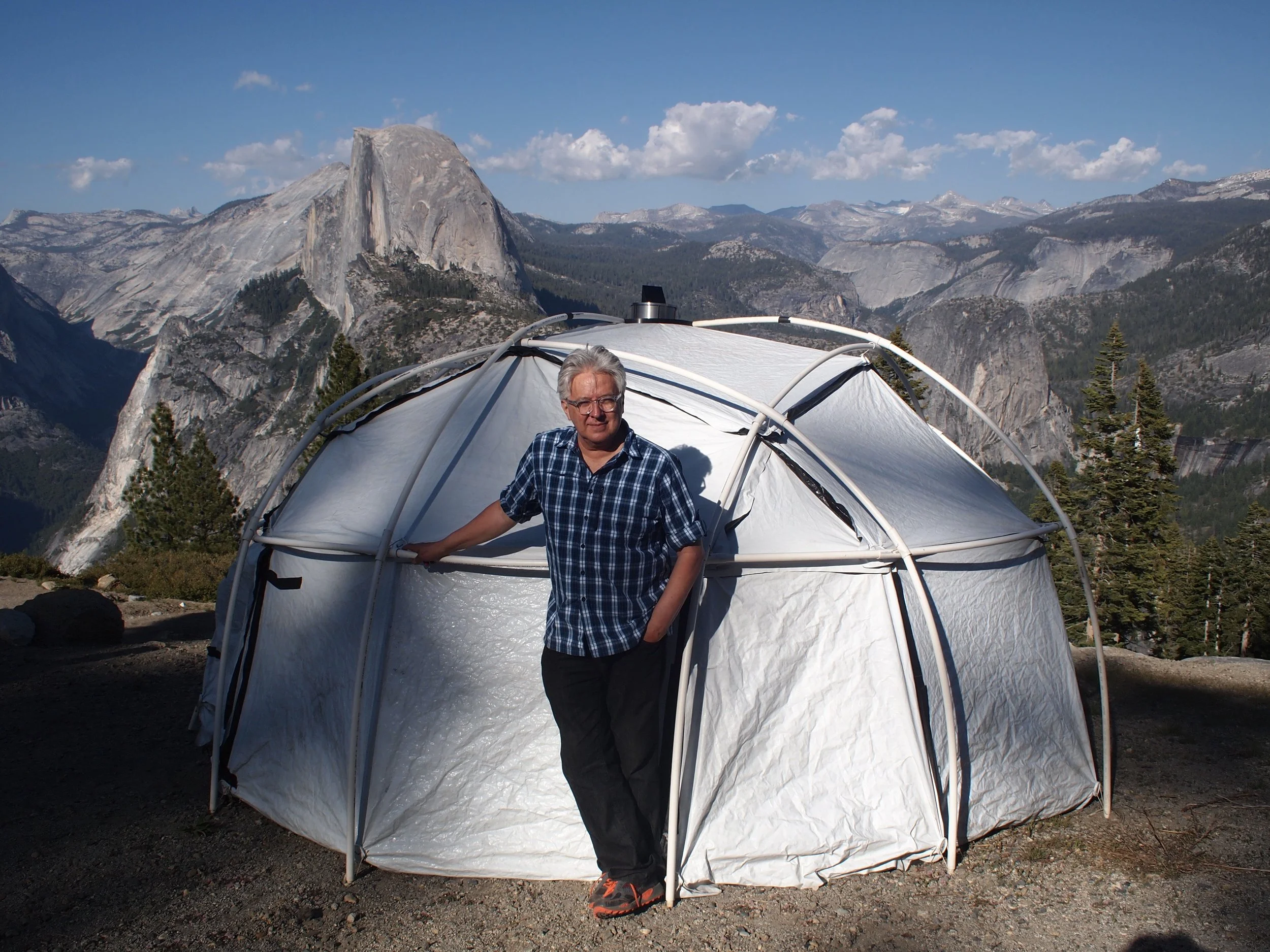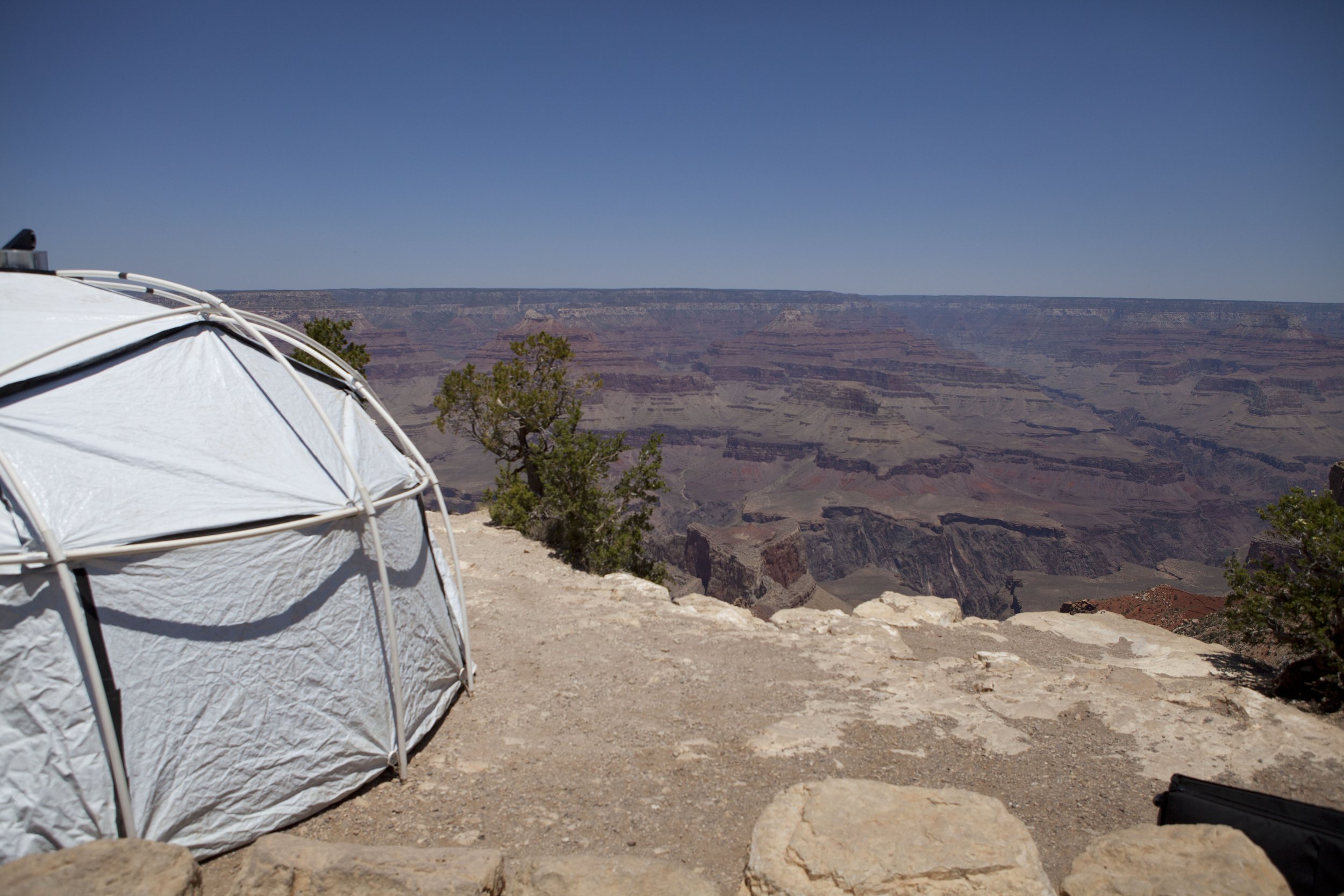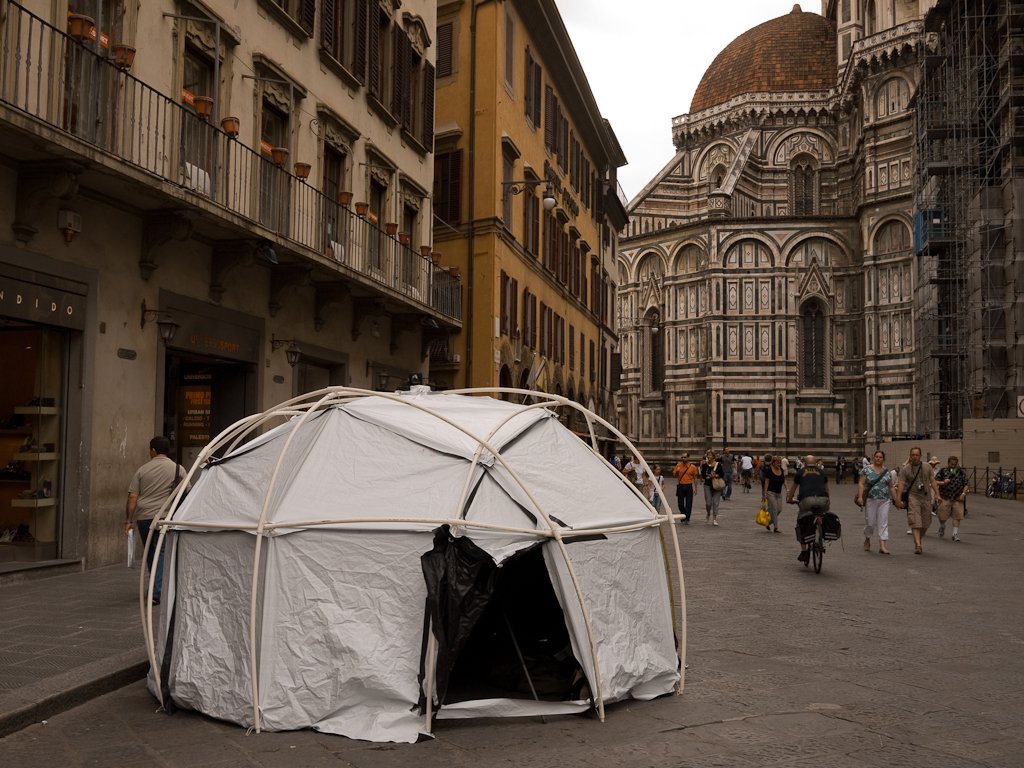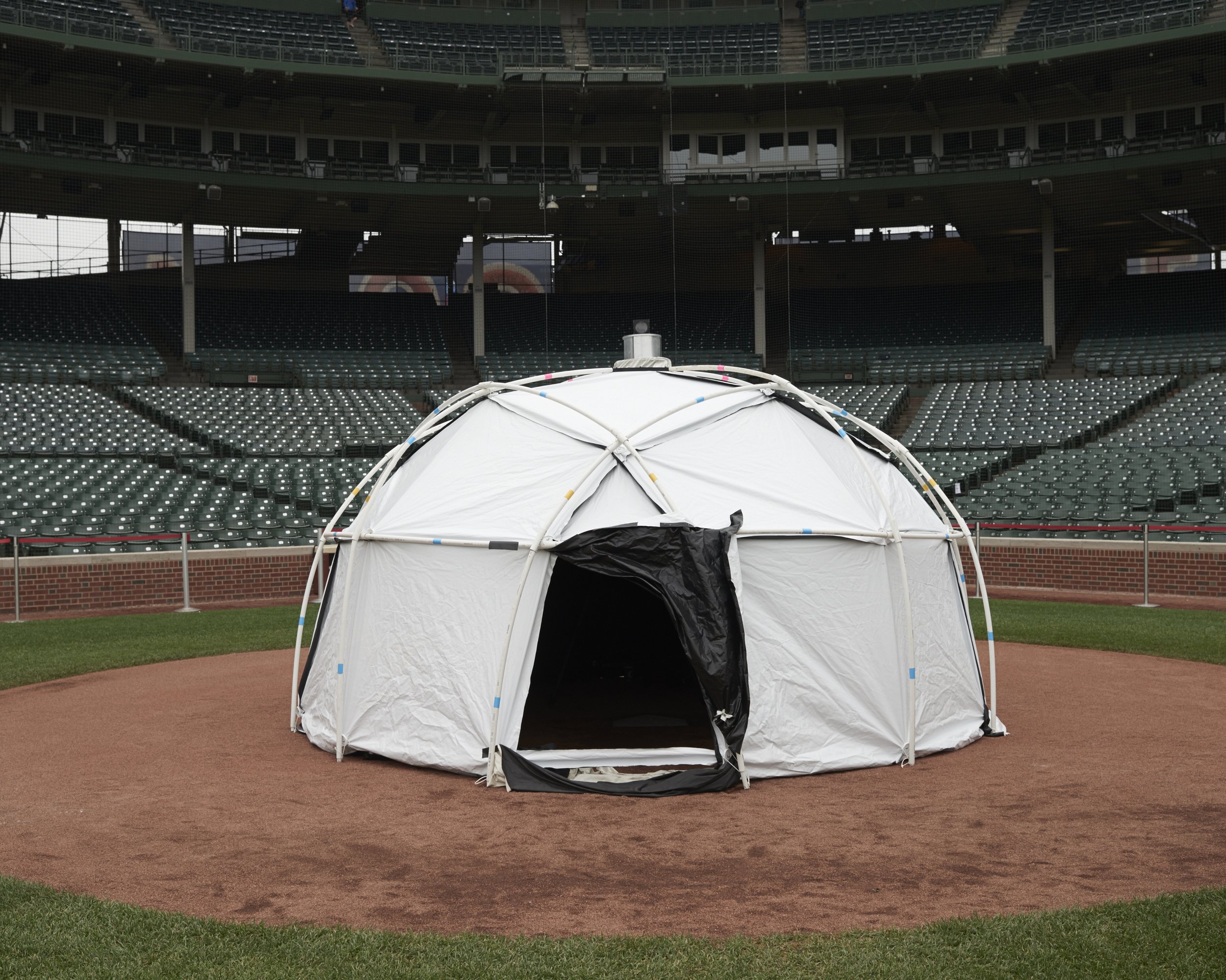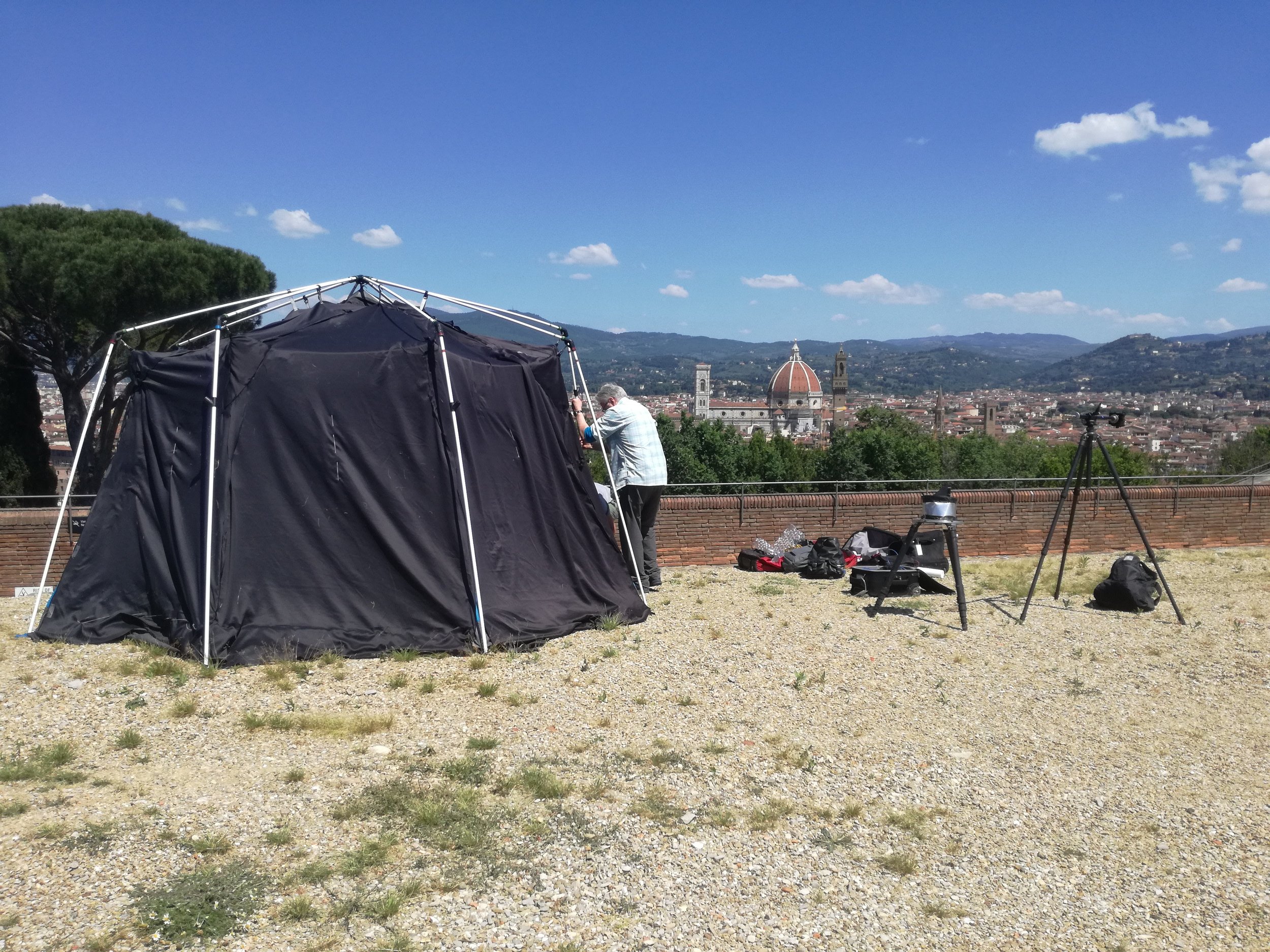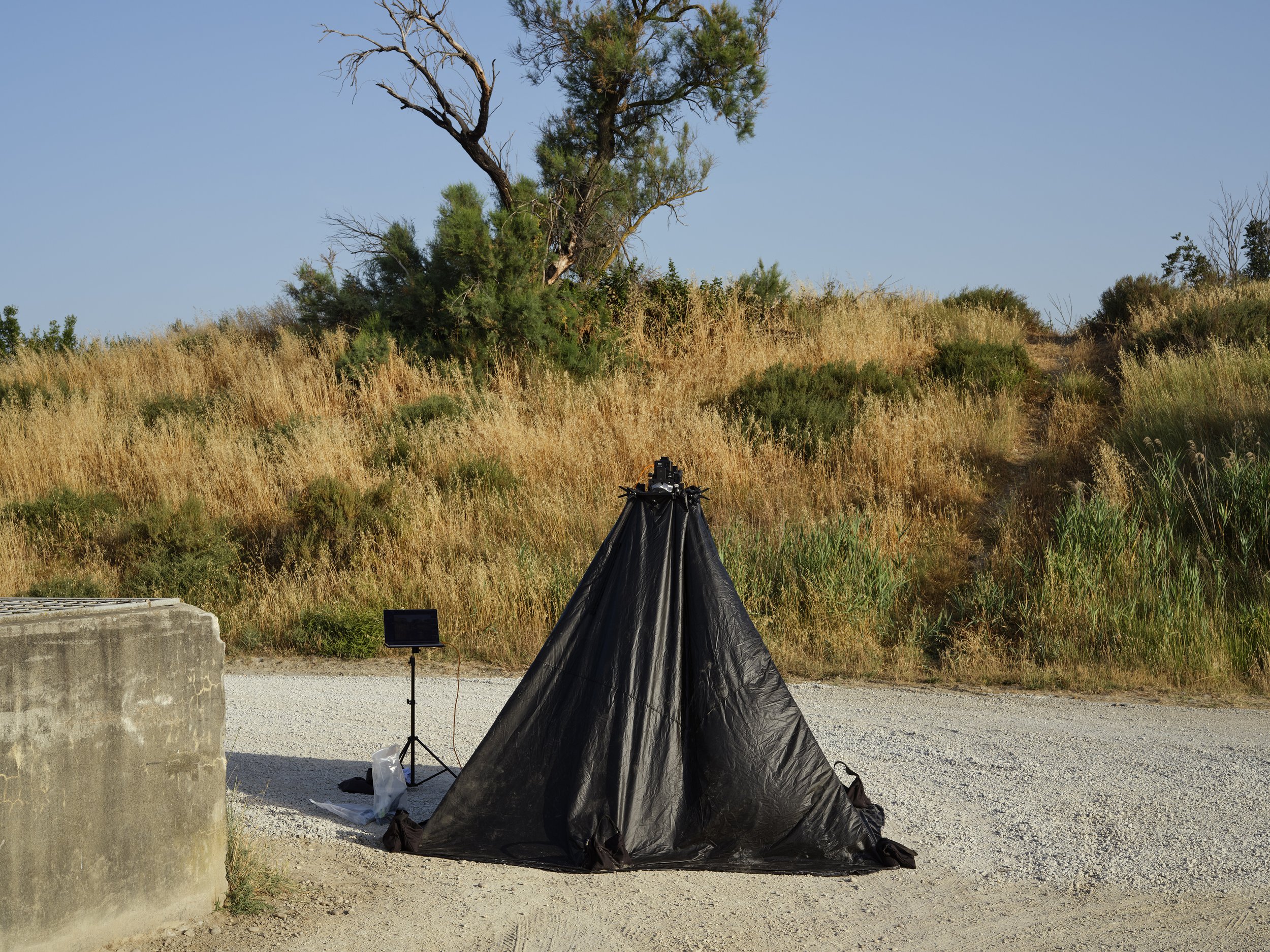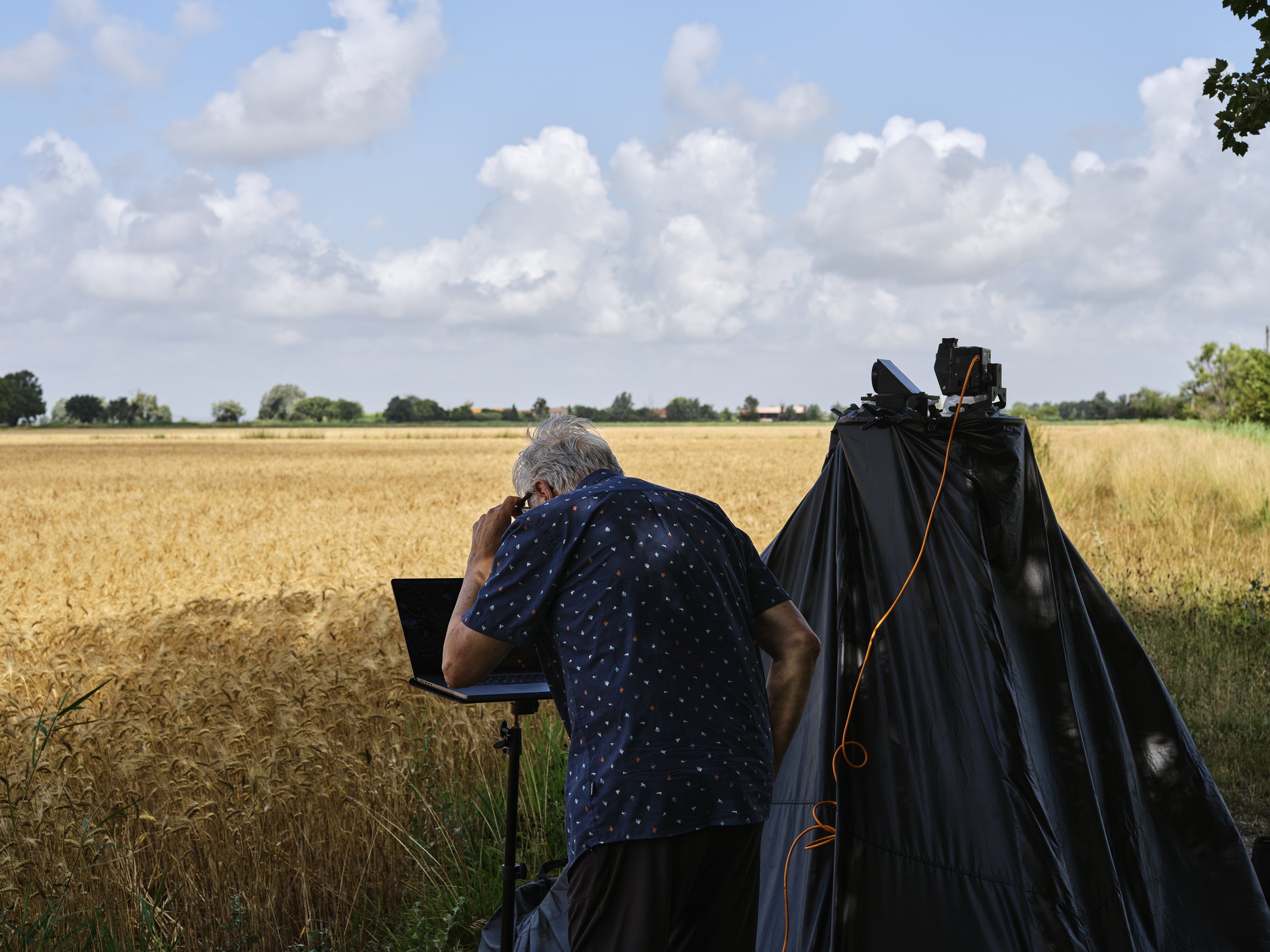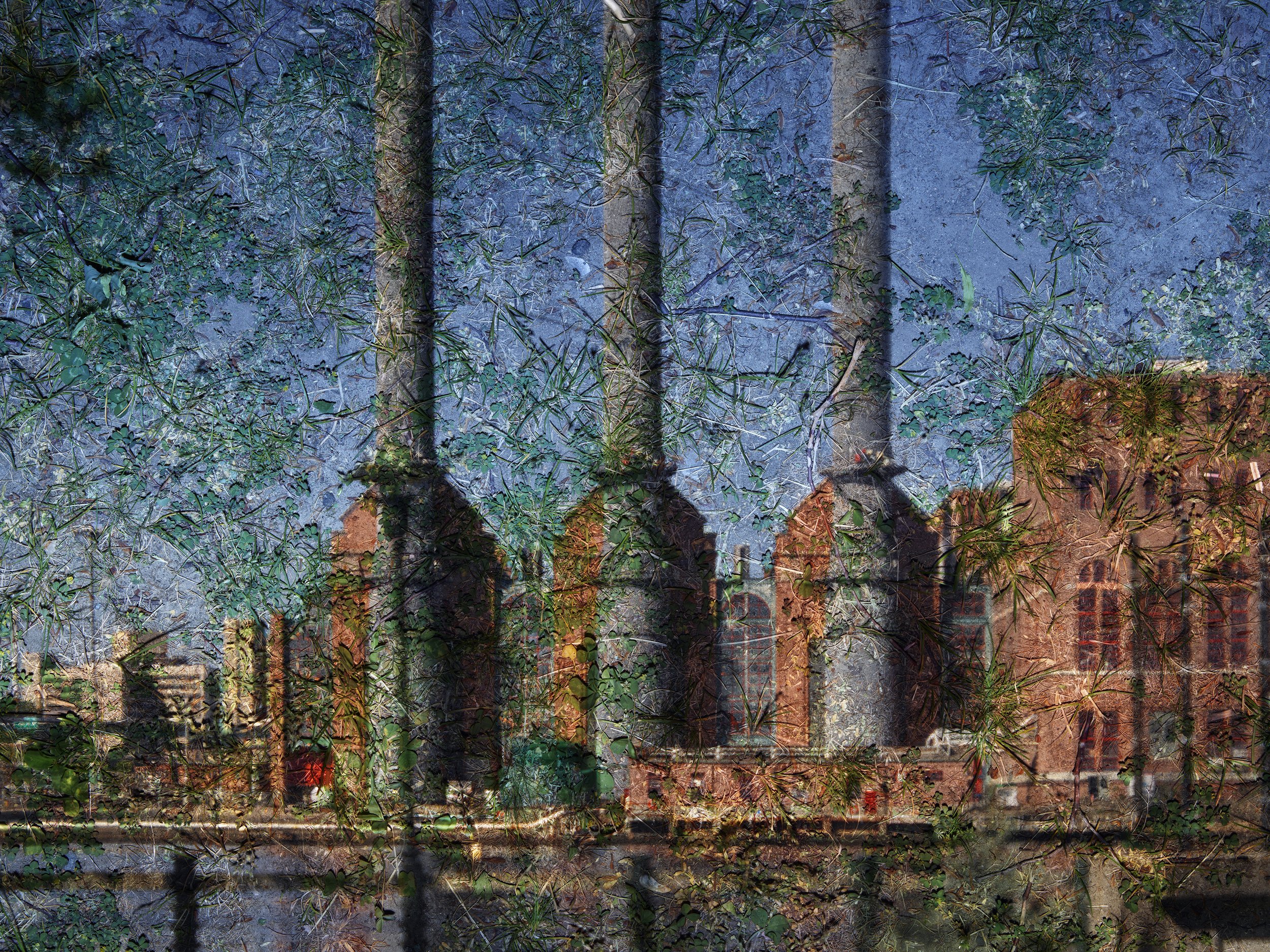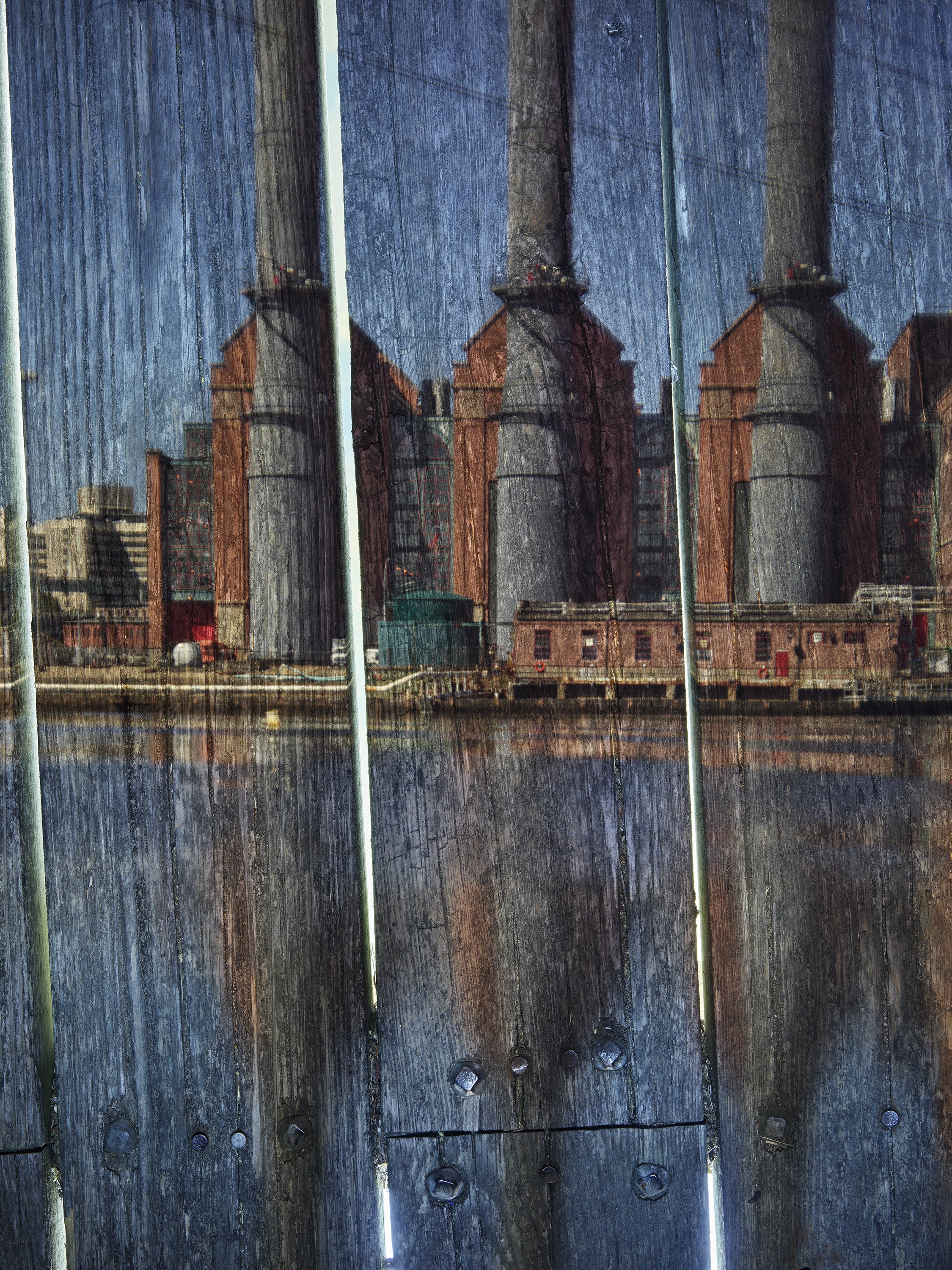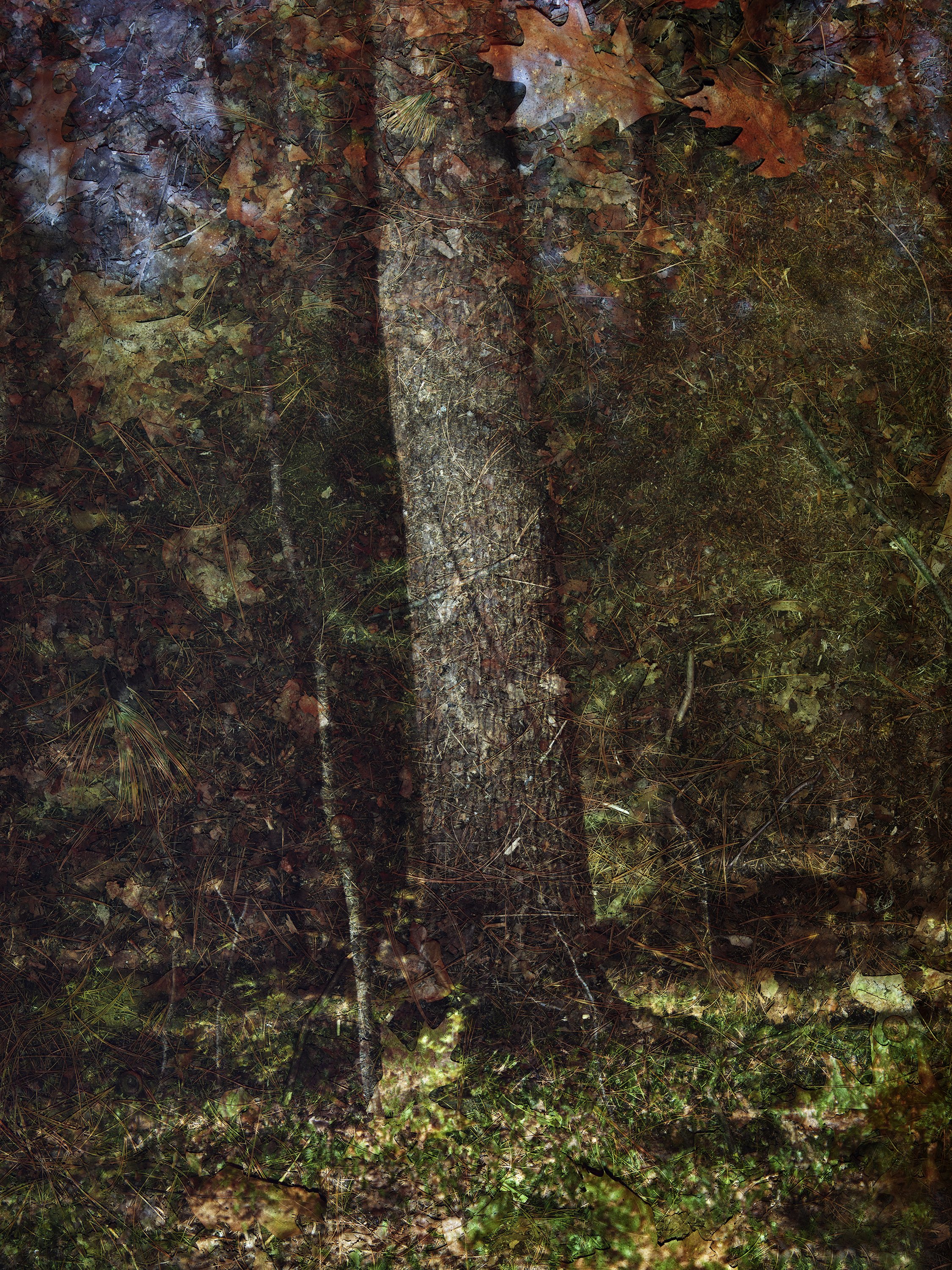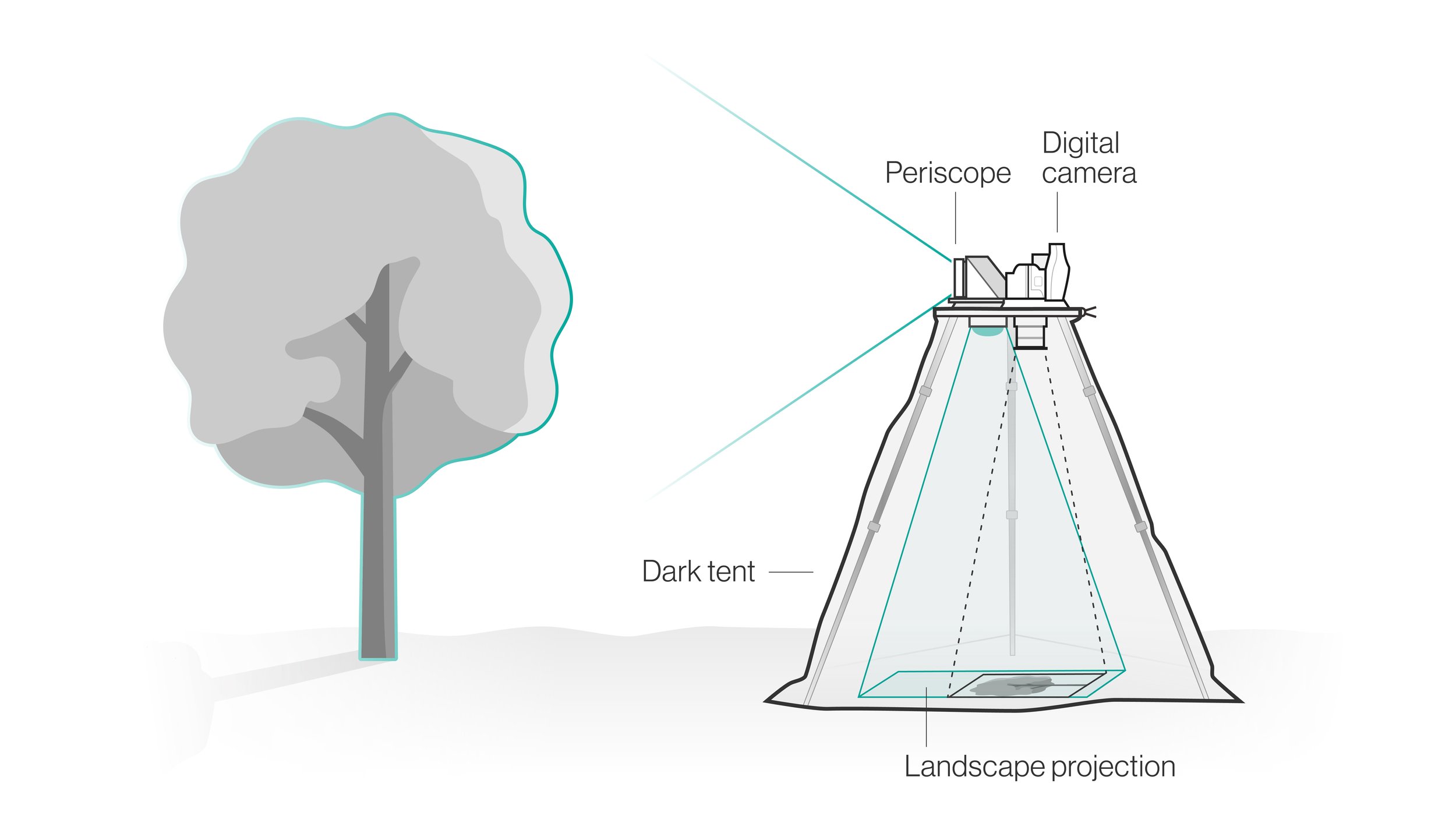Tent-Camera: Images on the Ground
Since 1991 I have converted rooms into Camera Obscuras in order to photograph the strange and delightful meeting of the outside world with the room’s interior. In an effort to find new ways to push this technique, I have worked with my assistant, C.J. Heyliger, on designing a lightproof tent, which can project views of the surrounding landscape, via periscope type optics, onto the surface of the ground inside the tent. Within this darkened space I use a camera to record the sandwich of these two outdoor realities meeting on the ground. Depending on the quality of the surface terrain, these views can take on a variety of painterly effects.
The added use of a digital technology camera lets me record visual moments in a much shorter time from — for instance I can get clouds and even people to show up in some of the photographs.
Observing the landscape with specially equipped tents was practiced by some artists in the 19th century in order to trace on paper what they saw. Interestingly, this approach to picturing the land was taken even before the invention of photography. My tent-camera liberates me to use the Camera Obscura technique in places where it would have been previously impossible to work, because I now have a portable room, so to speak.
National Park Tent-Camera
I have always loved The 19th Century photographs of the American West by Carleton Watkins, Timothy O’Sullivan and William Henry Jackson but, when I had a commission to photograph these landscapes anew, the work of these men daunted me—so much so that, for a long time, I couldn’t imagine how I would approach making landscape images myself. But like many immigrants, I felt moved to explore the vastness of my adopted country. To picture America’s national parks, I invented a device—part tent, part periscope—to show how the immediacy of the ground we walk on enhances our understanding of the panorama, the larger world it helps to form. I wanted to find a way to make these well-known views of familiar and iconic places into my own private discoveries.
Jamie M. Allen of the George Eastman Museum describes what I do with my tent-camera better than I can in his book Picturing America’s National Parks (2016): “The resulting photographs are a mix of image and texture. The image is that of a common scenic view; the texture, however, is derived from the land itself, the very spot where one stands to experience the scenery. The ground cover – dirt, tocks, grass and sand – typically lies at the onlooker’s feet, ignored in favor of the vista. Morell, conversely, ties the ground to the scenic view, transforming the geology of the landscape into his canvas”.
The fourth century poet, Lu Chi, wrote: “We enclose boundless space in a square foot of paper”. I know he was defining the task of the poet but, to me, his words shape my own ambition as a photographer.
The History of my Tent Camera
Observing the landscape with specially equipped tents and lenses was practiced by artists in the 18th and 19th century and even earlier in order to trace on paper what they saw projected in the darkness of their tents. Interestingly, this approach to picturing the land was taken even before the invention of photography in 1839.
In considering this old way to envision the landscape I began to design ways that I could use to do the same thing in 2010. Over the years my design has improved my picture making and now with my latest incarnation of the Tent Camera my pictures have become sharper and more vivid. This is the device that I used to make pictures in the South of France in the Summer of 2022
Essentially, I am now using a light tight tent with a periscope type lens on top so that any landscape can be projected onto the ground inside the darkened space of the tent. I also have a digital camera next to the periscope looking down towards the ground to capture the sandwich of the landscape projection and the dirt and rocks of the ground surface. I no longer need to be inside the tent because my camera is operated with a connected laptop outside. This new design is smaller and more portable too.
